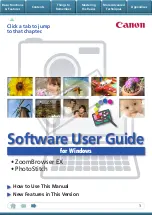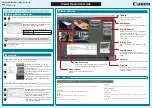
WiseScript Package Editor Reference
222
Creating Custom Dialog Boxes
3. Complete the dialog box:
EXE Path
Specify the path to the application to be executed, including the application
executable. Use variable substitution (example: %MAINDIR% to refer to the
application directory) to ensure a valid path regardless the installation location.
Enter only the file name if you set the path in the Default Directory field
below.
Command Line
Enter the command-line options for the application (example: /S /Q). To link to
a Web page, enter the URL for the Web page (example: http://
www.sample.com).
Default Directory
Specify the directory where the application looks first when looking for a file. If
you entered only the file name in the EXE Path field, the file must exist in this
directory. You can also use variable substitution.
Variables Added
Any script variables that were added by the executable program using a DDE
link are displayed.
Note
This field is retained for backward compatibility only.
Window Size
You can force the application to run in a maximized or minimized window, or
allow it to run in its default (normal) window.
Wait for Program to Exit
Mark this to pause the installation until the executed installation has exited.
4. Click OK.
Aligning and Spacing Dialog Box Controls
The alignment and spacing commands help you align and space controls in relation to
one another.
1. Open the dialog box in the Custom Dialog Editor.
See
Editing Dialog Boxes
on page 203.
2. Select multiple controls.
3. From the Layout menu, select one of the following commands:
Align Controls Left
Aligns the left edge of the selected controls with the left edge of the leftmost
control.
Align Controls Right
Aligns the right edge of the selected controls with the right edge of the
rightmost control.
Align Controls Top
Aligns the top edge of the selected controls with the top edge of the topmost
control.
















































